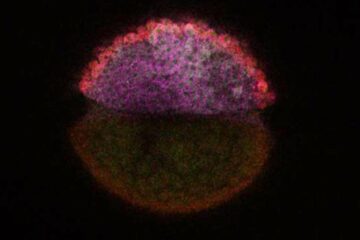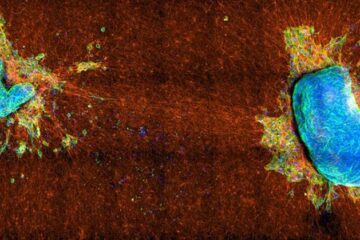Green tomatoes’ future foretold

Fruit’s hidden colour reveals whether it will ripen.
Some green tomatoes have a rosy future; others do not. A sensor that picks up subtle differences in the light the fruits reflect could sort future salads from greens.
Many tomatoes are picked green and bathed in ripening gas ethylene. Fruit picked too early will never ripen. Discerning consumers avoid them and growers lose out.
A scanner that analyses the wavelengths green tomatoes bounce back can predict those that ultimately will ripen, Frederico Hahn of the Centre for Investigation of Food, Sinaloa, Mexico, has shown1. Some of the world’s annual 60 million tonnes of tomatoes could be saved this way, he hopes.
“Maybe you can find some clues that ripening will happen,” agrees Ian Young who is working on similar detectors at the Delft University of Technology in the Netherlands. “We’re looking for ways to do things that the market hasn’t even thought of,” says Young.
Like Hahn, fruit sorting company Colour Vision Systems, in Bacchus Marsh, Australia, uses infrared spectroscopy to measure the sugar content of melons and stone fruit. The technology could be adapted for tomatoes, concedes one of their scientists Gary Brown, though, at present, it may be too expensive.
Colour coding
Some fruit packers already use automatic colour sorters to grade the ripeness of their fruit. Conventional cameras measure red, green and blue wavelengths emitted, and classify the produce before boxing. The United States Department of Agriculture has six official colour classifications: green, breaker, turning, pink, light red and red.
But to these cameras, one green tomato looks like another. So size, shape and internal appearance are used to judge when a green crop is on the turn.
Hahn’s sensor instead measures all wavelengths over a large part of the visible and invisible spectrum. He analysed 300 green Gabriela tomatoes before storing them for 10 days.
Fruit that never ripen emit more intensely at some infrared wavelengths on day one, he found. The green pigment chlorophyll has a characteristic emission of infrared light that changes during ripening, as chlorophyll degrades and red and yellow pigments called carotenoids accumulate.
Hahn used these key wavelengths to develop a ripeness predictor. It foretold maturity with over 85% accuracy on 600 fruit, for which visual inspection proved useless.
References
- Hahn, F. Multi-spectral prediction of unripe tomatoes. Biosystems Engineering, 81, 147 – 155, (2002).
Media Contact
All latest news from the category: Agricultural and Forestry Science
Newest articles

Decoding development: mRNA’s role in embryo formation
A new study at Hebrew University reveals insights into mRNA regulation during embryonic development. The study combines single-cell RNA-Seq and metabolic labeling in zebrafish embryos, distinguishing between newly-transcribed and pre-existing…

Study sheds light on cancer cell ‘tug-of-war’
How cancer cells tug against each other determines whether they can migrate elsewhere in the body. Understanding how cancerous cells spread from a primary tumor is important for any number…

Latest generation of self-dissolving stents
Magnesium implants support coronary arteries and keep them open. Constricted coronary arteries harbor dangers: Because the heart is not supplied with blood properly, this can lead to pain, cardiac arrhythmia,…





















